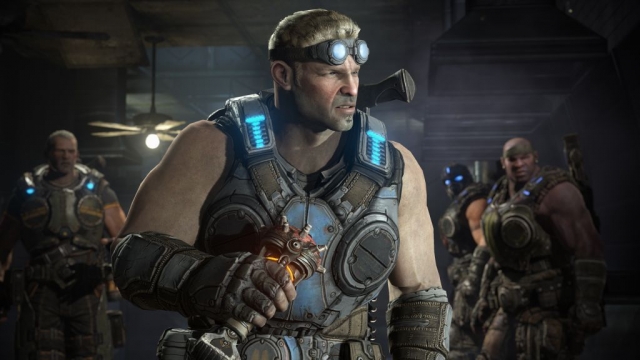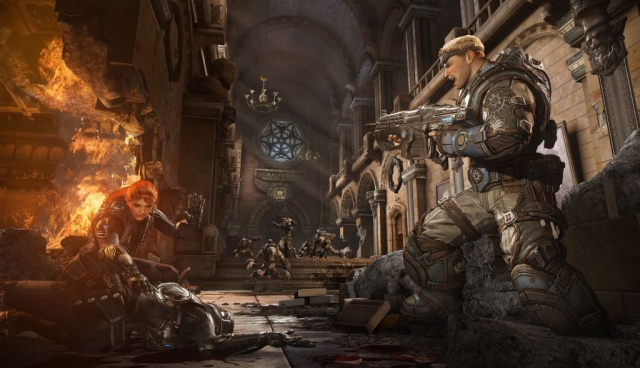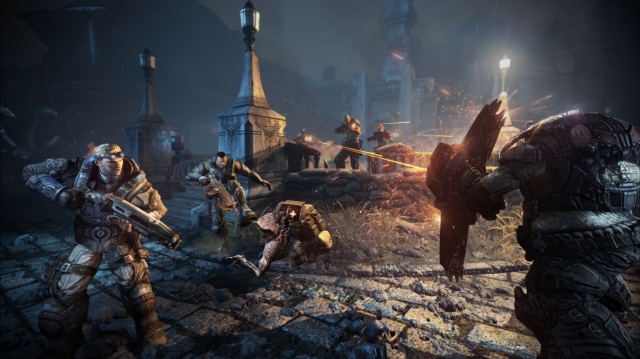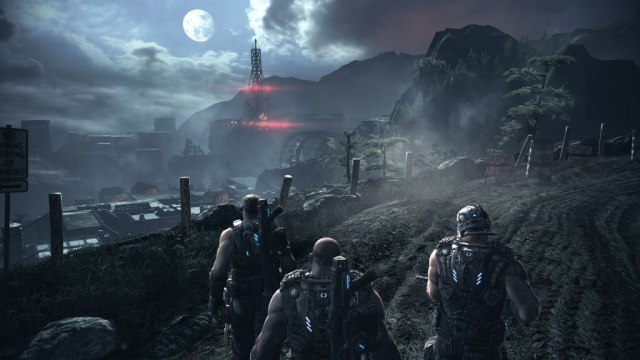Gears of War: Judgment Review
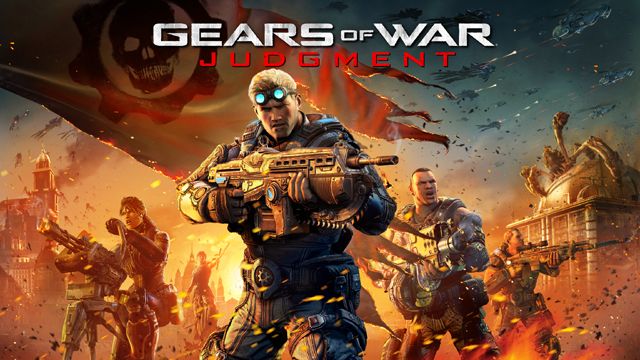
Gears of War is a series that’s made a name for itself by providing addictive combat and impressive scale and spectacle in its environments and the many battles that rage within them. It’s a series that’s been known to thread one memorable moment after the next. The latest entry, Judgment, serves to set the stage for the original game by explaining what happened to Baird and his squad before they meet up with Marcus Fenix.
I’ve been known to enjoy the occasional origin story every now and then. They can be fun and provide valuable information for fans. Unfortunately, as a Gears game, Judgment isn’t the story I came to see.
On a purely personal level, I don’t like Baird. I find him annoying and almost cartoonish in his inability to act as the comedic relief since his unfortunate introduction in the original Gears of War. I hate everything about him, from his personality to his weird blue goggles that he’s never actually worn since he’s been too busy using them to protect his forehead.
That aside, the rest of his squad is a little less bothersome.
Cole is great, as expected, Padduk provides a few laughs, and Sofia rounds out the team as its only female member. Gears of War has never been known for its deep character development, outside of some fairly intense scenes in Gears 3 (I won’t ruin them here). I enjoyed seeing the story play out from the perspective of each member of Baird’s team, though unfortunately, that does mean that you cannot customize your single-player character through the game’s incredibly rewarding customization system.
While we’re on that, I really like what developer People Can Fly did with the character customization this time around. You unlock new characters and textures – some are animated, as they were in Gears 3 – for each character and weapon.
People Can Fly also made a few mostly welcome tweaks to the combat. Now, if you throw a grenade at an enemy, it sticks to them. This means you don’t have to run up to them, plant it on their face, and roll dodge away before it explodes, taking you with it.
Switching weapons has been mapped to the Y button, instead of the D-Pad, with grenades attached to the left bumper. This makes it easier to equip a new weapon during combat so you don’t have to take your thumb away from the left joystick. Unfortunately, it also limits your character’s arsenal to two weapons instead of three.
Judgment has been designed with replayability in mind. Quite a bit of effort has been invested into dividing its campaign into easy-to-ingest chunks, with a new “Declassified” option for each mission that makes it a wee bit more difficult. The Declassified missions mix up the gameplay in a variety of ways by introducing a time limit – a little too often, I might add – reducing visibility with dust, smoke, or chemicals, disabling health regeneration, limiting ammunition or available weapons, etc.
Outside of the added challenge or making completing each missions more rewarding, activating the Declassified version of the mission makes it easier to unlock stars. Think of the stars as a Devil May Cry style reward system for performing particularly well on a mission. The better you do, the more stars you’re rewarded with, and the further you get to unlocking something with them.
I completed roughly three fourths of the campaign in its Declassified state. Almost all of the missions I skipped were the ones that limited how much time I had to complete them. This is a great addition to the game – the only problem is they decided to introduce it in arguably the least replayable Gears game.
I say this because the memorable moments, spectacle, and scale I mentioned earlier are mysteriously absent in this installment. It’s mostly a close-quarters affair, with you and your squad tightly packed in claustrophobic hallways, rooms, and small arenas like a bunch of heavily armored sardines.
There are also lots of Wretches, so plan on carrying a shotgun with you at almost all times.
Horde mode has been omitted from this entry, and my best guess for this decision is because someone decided to turn what felt like every other mission into a Horde mode style standoff, only without many of the toys that made Horde so much fun in Gears 3.
Far more often than I would’ve preferred the game had me defend one area after another from waves of invading Locusts. Don’t get me wrong, I am a huge fan of Horde and I would’ve been happy with one or two moments that paid homage to it. Sadly, it’s more like six that awkwardly try to implement a bare bones Horde mode into the mix.
Thankfully, you have a few new toys to make up for the lack of excitement in these missions. The Tripwire crossbow is amazing. I hope it makes its way to the inevitable Gears 4. A few crude weapons have been introduced, including the lever-action Breechshot, Markza sniper rifle, and Stim-Gas grenades that heal you. I never used the grenades, but I like the humor in it.
When you’re done with the 6 to 8 hour-long campaign, you should definitely move on to the Aftermath story. Mostly because it’s more fun. Aftermath tells the story of Baird and his squad who embarked on an adventure to retrieve backup for Marcus and friends near the end of Gears 3. Its higher production values and added color make it look like a scrapped expansion for Gears 3, but if that’s the case, I’m okay with more of what made the third game so much fun.
It’s short – it took me around two hours to complete – but they were an incredibly entertaining two hours.
Obviously, for many Gears fans the multiplayer is where it’s at. Judgment brings with it a brand new mode called Overrun, where two teams fight for supremacy as either the COG or the Locust. Think of it as a mash-up of Horde and Beast mode. As the COG, you’re tasked with defending an Emergence Hole cover against the other team whose goal is to destroy it (and you).
There are also the obligatory competitive Deathmatch modes where you try and take out the other team, or go at it in free-for-all. I’m not a fan of these for the simple reason that I am embarrassingly bad at them. If you’ve enjoyed this feature in past Gears games, there’s really no reason you won’t in Judgment.
Survival essentially replaces Horde as the game’s only co-op exclusive multiplayer mode. It’s a streamlined version of Horde, sans boss waves, less of a focus on team survival – now you’re protecting a point on the map – and limited defenses. In other words, it’s worse.
Perhaps the most jarring difference between Judgment and its predecessor is the color palette. Gone is the vibrant color of Gears of War 3 – it’s been replaced by the dreary brown and grey mess that was all too prevalent in the first two games. That’s actually a very good way to explain Judgment: it’s just less colorful. It’s less interesting, less memorable, and has less variety. That isn’t to say this is a bad game. Even a bad Gears game is a good game; it’s just unfortunate that this series has to end – on this console generation anyway – not with a bang, but with a whimper.
Reviewed By: Adam Dodd
Publisher: Microsoft Studios
Rating: 70%
——————————————————————————–
This review is based on a copy of Gear of War: Judgment for the Xbox 360 provided by Microsoft.
 Game Over Online
Game Over Online